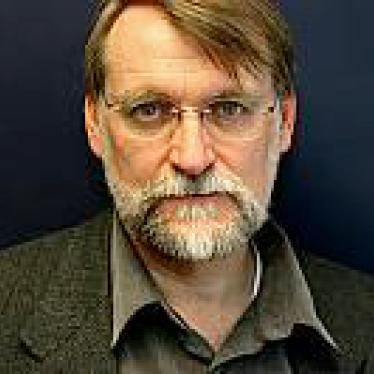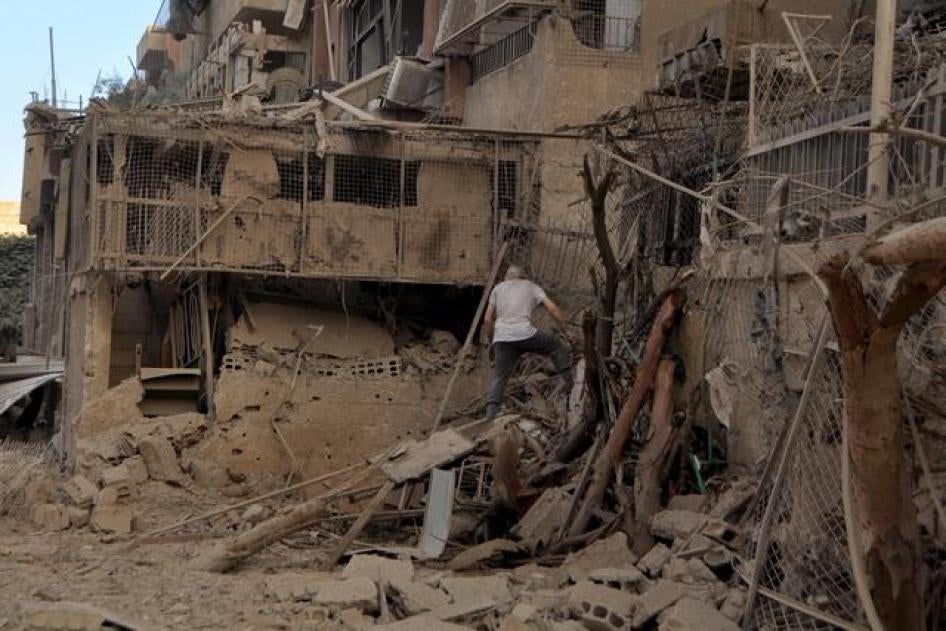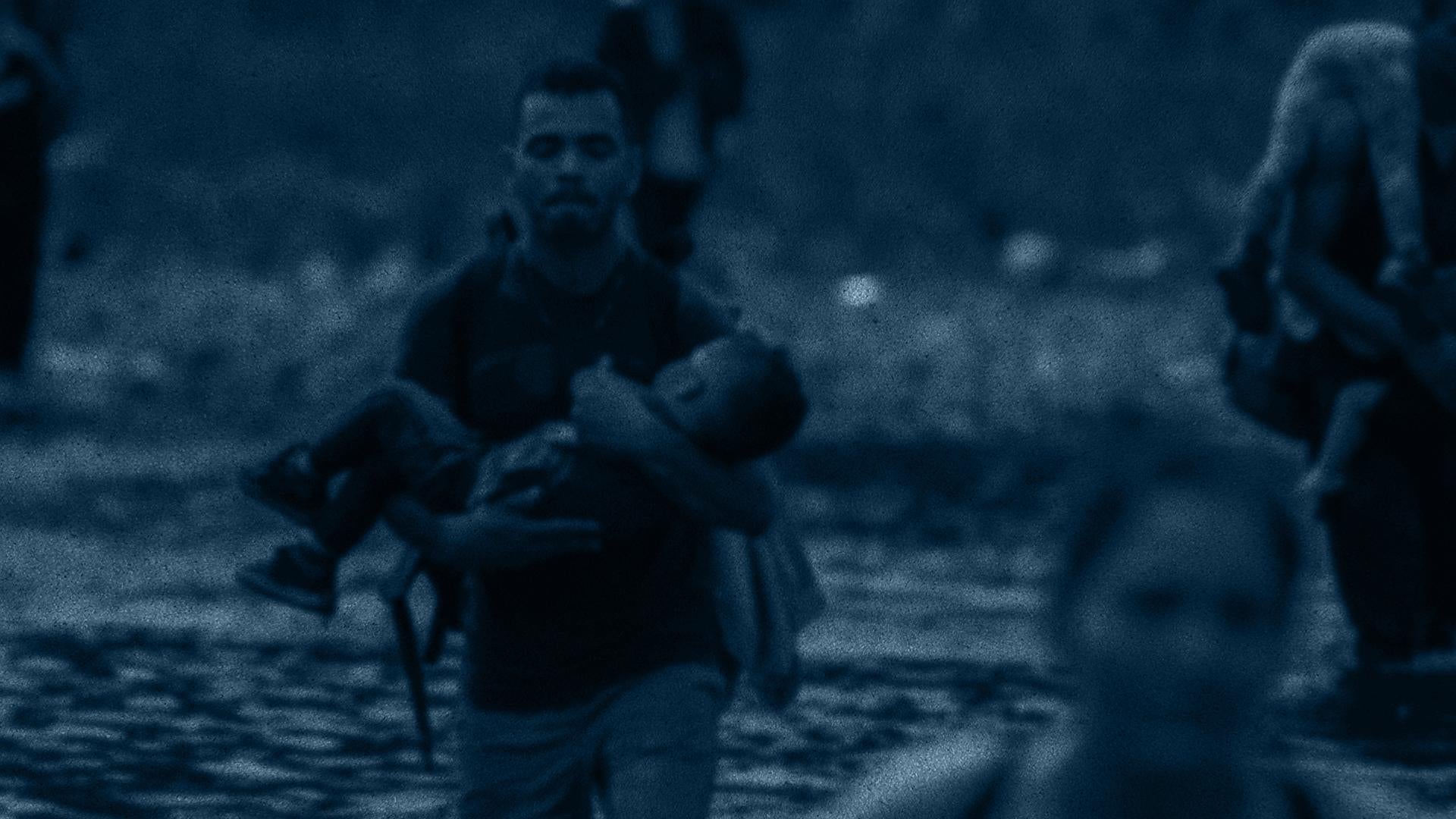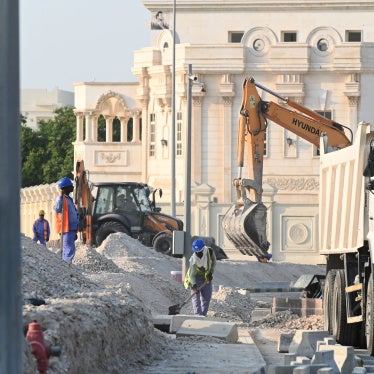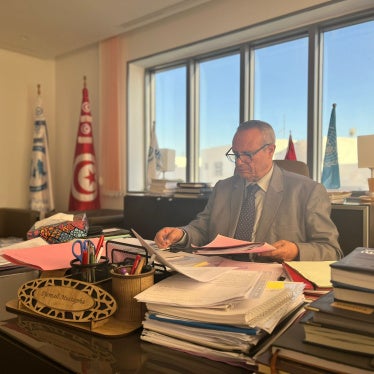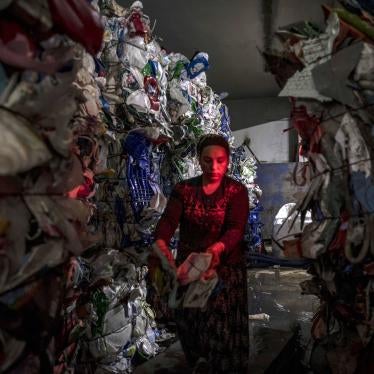Um Ghassan was eleven in 1948 when her family fled Haifa. They joined the Palestinian exodus to Jordan, and later moved to Syria. “They welcomed us like we were their relatives,” she said. Decades later, when fighting broke out in Syria in 2011, Um Ghassan initially stayed in her house. “I would never leave my home,” she told me. But after bombing destroyed part of it, she had no choice. She fled to Yarmouk, an urban camp on the southern edge of Damascus, where Palestinians were settled after the 1948 Arab-Israeli War. “We thought Yarmouk was safe—all Palestinian refugees. No one would attack it.”
She was wrong.
I met Um Ghassan after she fled to Lebanon, where she and her grandchildren were crammed with other Palestinian refugees in the Baddawi camp near Tripoli. Her life illustrates what Antonio Guterres, the UN High Commissioner for Refugees, has called “protracted mega-emergencies”—the semi-permanent conflicts engulfing the Middle East and other regions. The Palestinians who originally fled in 1948 or 1967 and were perhaps displaced again because of conflicts in host countries—Black September in Jordan in 1970-71 or the “camps wars” in Lebanon in the 1980s—are once again seeing their lives upended by armed conflict.
Today’s protracted situations are characterized by the stagnation that erodes refugees’ social and economic rights such as education, health care, and employment. But the refugees also suffer from civil and political rights violations arising from the constant emergency in which they live. People in protracted mega-emergencies are often displaced multiple times and then continue to live in conflict zones, where the ongoing violence and inadequate response by the international community threaten their most fundamental need when all else fails: the ability to flee.
The Yarmouk camp that Um Ghassan had imagined would remain a safe haven for Palestinians has been anything but. After she fled, the Assad forces laid siege to Yarmouk, blocking food and medical supplies as they bombed the camp, trapping 18,000 Palestinians amid bomb-shattered buildings. UN Secretary General Ban Ki-moon recently referred to Yarmouk as “the deepest circle of hell.” The violence has not stopped as the Islamic State (ISIS or ISIL) has now entered the camp and joined the fight.
Palestinians trying to flee Syria were the first group to be pushed back by neighboring countries. But Syrian nationals, too, are increasingly being turned away. Last year, Lebanon introduced regulations limiting access at its border with Syria. For Syrian asylum seekers, a mere well-founded fear of persecution no longer serves as a sufficient basis for entry without also showing an “extreme humanitarian” need—and Lebanese border authorities rarely make even that exception.
Will the next refugee be the straw that breaks the Lebanese camel’s back? Consider Lebanon’s burden: 1.2 million Syrian refugees have poured in during the past four years on top of previous influxes of Iraqi refugees who entered in the 1990s and 2000s and Palestinian refugees, some of whom entered in 1948. Refugees now represent between one quarter and one-third of Lebanon’s total population.
Jordan, also pointing to its exhausted capacity to absorb refugees, has since late March severely restricted informal border crossings in the east—the last section of its border with Syria that had not yet been closed. Satellite images this month show tents springing up in the remote desert areas just inside Jordan’s border, as Syrians are prevented from moving to safer ground. Bottlenecks also continue to be reported on Syria’s northern border with Turkey, as asylum seekers had to traverse barriers to entry after fleeing recent fighting in Tal Abayad. Neither Syria’s eastern border with Iraq, obliterated by ISIS, nor its southwestern border, sealed with Israel, are viable asylum options.
The blocked exits extend to other crises in the Middle East, such as in Gaza, where the summer 2014 conflict between Hamas and Israel killed approximately 2,100 Palestinians, of whom the United Nations identified more than 1,500 as civilians, and displaced 108,000 people. With Israel limiting its official crossing points and Egypt restricting its Rafah border crossing—its only official border crossing with Gaza—to all but a relative few of the wounded, Palestinians had little choice but to endure the violence.
The hardship in Gaza continues, with economic and free-movement blockades, slow reconstruction of damaged and destroyed homes, the highest unemployment rate in the world, and a spike in the number of Gazans trying the dangerous Mediterranean boat journey to Europe.
No one underestimates the enormity of the burden of protracted mega-emergencies for countries like Jordan and Lebanon. But they should not turn away asylum seekers. Pushing people back to life-threatening danger violates the principle of nonrefoulement, incorporated in the 1951 Refugee Convention, human rights treaties, and customary international law.
As this Saturday’s World Refugee Day approaches, the broader international community—particularly the governments of wealthier and more stable countries outside the immediate region—need to do their part to shore up the countries of first asylum and help keep their doors open. That starts by not closing their own doors.
The European Union’s April 23 statement following its special meeting on the Mediterranean migration crisis said that it would strengthen its presence at sea “to fight the traffickers” and use force to destroy vessels before they can be used to transport migrants. But using smokescreens to stop the flow of asylum seekers and migrants does not address the root causes of their movement: persecution, human rights abuses—whether economic, social, civil, or political—and generalized violence in their countries of origin. Nor do these actions address the lack of effective protection in the transit states the migrants and asylum seekers are fleeing, such as Libya, which is engulfed in a civil war that not only has displaced about 400,000 of its own citizens, but also has endangered the lives of non-citizens living there. Lawlessness and violence has compelled many migrant workers in Libya to attempt the sea crossing to the EU.
As the difficulties they face have become extreme, Syrians and Palestinians have joined the unprecedented numbers of refugees, asylum seekers, and migrants turning to smugglers to ship them across the Mediterranean to Europe, despite the risks. So far this year, at least 1,850 people have drowned at sea attempting the journey. Of the estimated 103,000 people who reached European Union shores by mid-June, 60 percent had come from Afghanistan, Eritrea, Somalia, and Syria—countries ravaged by armed conflict or grave human rights violations.
Under pressure from their own populations, EU member states are belatedly doing more to rescue boats in distress in the Mediterranean. That is helpful, of course, but not sufficient. One immediate imperative is to meet the needs of people still in the conflict zones. The United Nations has called for $8.4 billion this year to meet the needs of 18 million people affected by the Syrian crisis. That appeal is 44 percent funded through country pledges, including $1.83 billion from the EU and its member states and $507 million from the United States.
Yes, $8.4 billion is an overwhelming number, but 130,000 is not: the number of Syrian refugees UNHCR has called on governments to resettle from among the 4 million Syrian refugees in neighboring countries. So far, fewer than 90,000 places have been pledged: EU members have pledged to offer about 45,000 places. The United States has not made a specific pledge, but as of May 31, had admitted only 902 Syrian refugees since 2011.
While resettlement is not a panacea, it does save lives. It also serves purposes beyond individual rescue. Refugee resettlement demonstrates solidarity with countries on the front lines of the crisis. Syria’s neighbors make no secret that they believe they have reached their limit—and the borders are closing. As Syria’s neighbors close their doors, the willingness of the United States and other countries outside the region to resettle refugees—at a pace and number consistent with the need—is crucial for these vulnerable people. Whether avenues of escape remain open or closed could be the difference between life and death for those trying to flee.
Bill Frelick is the Refugee Rights Program director at Human Rights Watch
